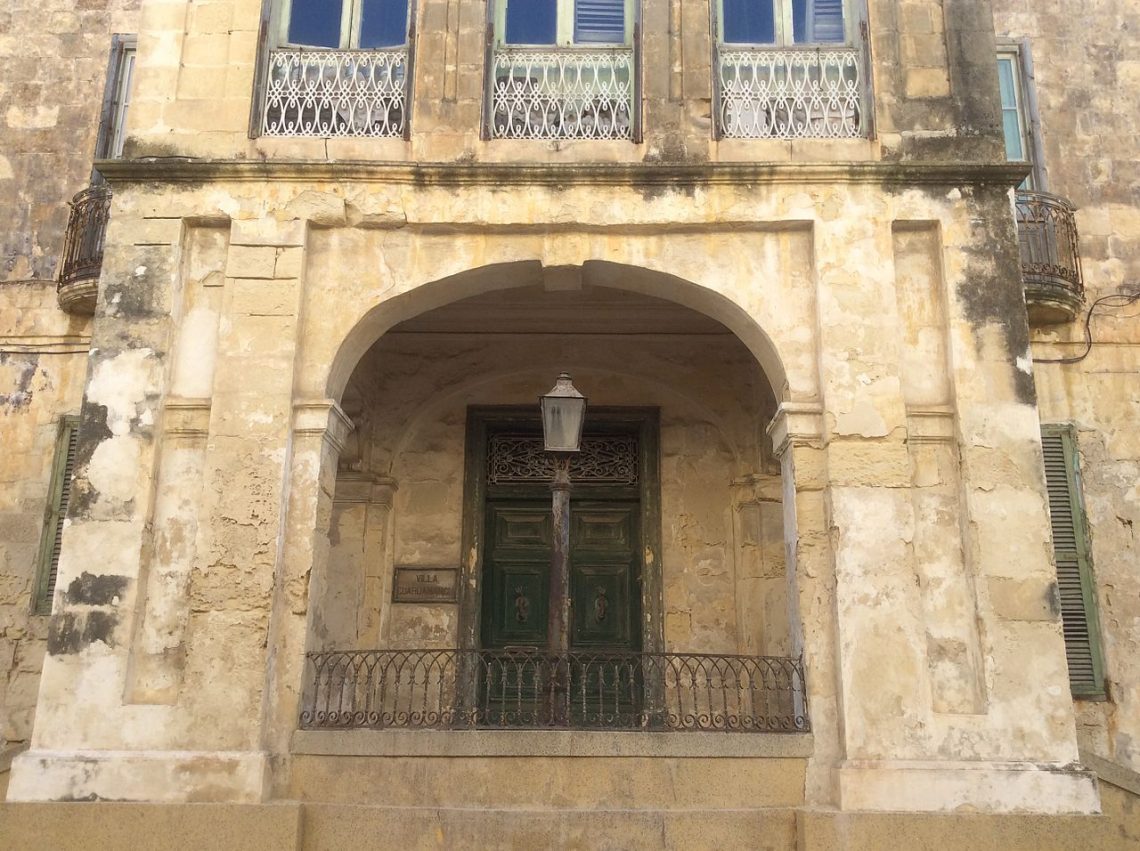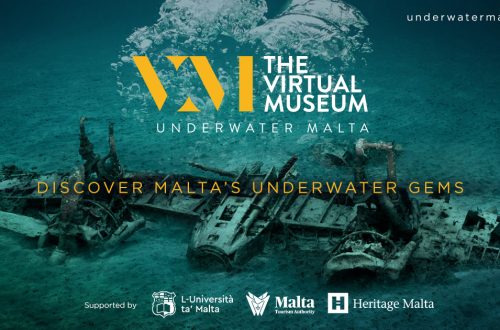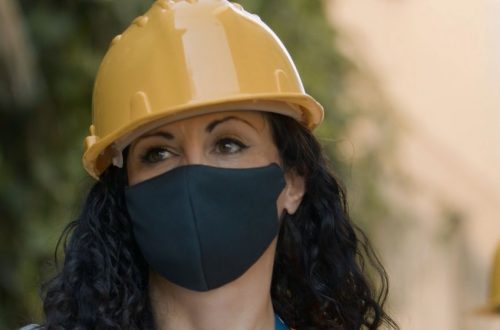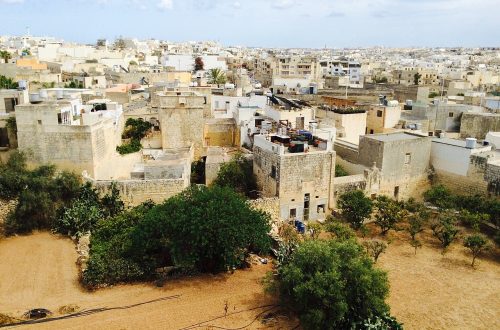
No. 49 – Fit for a Queen (Pietà, Malta)
Heritage Malta, in cooperation with and sponsored by a real estate agency, launched a virtual 3d tour of the Villa Guardamangia, which was the Summer residence of Queen Elizabeth II from 1949 to 1951. The virtual experience doesn’t reproduce the museum experience, but gives access to a recent acquisition from the agency and acts as a blueprint of the current degraded state of the property, as it enters a long project of restoration. Exclusives tours have been organised for members of the organization (subscribers), hence this virtual tour also offered a marketing leverage to get more people to subscribe, showing that exclusive perks, such as this, can be offered.
Background
Heritage Malta is the Maltese national agency for museums, conservation practice and cultural heritage. It replaced the former Museums Department in 2002 (Cultural Heritage Act).
The initial responsibility assigned to the agency was to manage museums, sites and collections. In 2005, Heritage Malta took over the Malta Centre for Restoration and became the national agency responsible for conservation. The conservation division offers training for conservators and conservation scientists.
The agency has a specific educational section with special programmes targeting children of different age groups, addressing specific areas of study with an edutainment approach.
Description
In August 2020, Heritage Malta, in collaboration with the real estate agency Dhalia Real Estate Services (which sponsored the initiative) launched a virtual experience to enable the general public to visit Villa Guardamangia in 3D.
The villa served as the residence of Princess Elizabeth II from 1949 to 1951 when Prince Philip, Duke of Edinburgh, was stationed in Malta as an officer of the Royal Navy. Villa Guardamangia is the only property outside Great Britain in which the royal family has resided.
The property is located at no 49, Guardamangia Hill, Pieta’, a Maltese village in close vicinity to Valletta, partially in a neglected state, as the villa itself.
It was purchased by the Government of Malta on 5th June 2020 and entrusted to Heritage Malta. It represents a classic example of a mid-18th century Baroque summer palace.
Prior to the royal couple, the villa was rented by Lord Louis Mountbatten, uncle of Prince Philip and Commander-in-Chief of the British Mediterranean Fleet (based at Fort St Angelo), from the Bartolo Family in the 1920’s. In 1949 Joseph Schembri, owner of the Daily Malta Chronicle and MP of the Labour Party, purchased the Villa from the Bartolos. Both families were pro-British.
Due to its architectural, cultural and historical value the villa was scheduled at Grade 2 by the Planning Authority. The villa has an area of around 1,500 square metres, and features, among other facilities, eighteen rooms, stables, a large garden, wells, a war-shelter.
Villa Guardamangia is currently closed to the public, as an extensive process of restoration is on its way. Only people who support Heritage Malta, being subscribed members, have been invited to curated tours of the premises, before the beginning of works.
Within this context, the 360-degree, Matterport virtual platform serves both visual memory of the past and a documentation of the villa in its present state for posterity, as well as granting access to the general public, also throughout the period of restoration.
Virtually opening a recent acquisition as such to the general public is particularly relevant if framed in the more general effort made by the agency to make heritage enjoyable also during the pandemic the largest audience possible.
“Most families are currently self-isolating, or in quarantine, with very little to do, offering a virtual trip to our sites is simply our Agency’s civic duty in these troubling times.” Noel Zammit, Heritage Malta’s CEO.
Impact
The initiative has been advertised by all means possible, including digital media, radio, newspaper, and national broadcast. Giving virtual access to the Villa is also a relevant marketing strategy because at the same time it’s showing the condition of the property in present times while educating about its history, but also starting to create awareness about the existence of such heritage. When the restoration works will be completed, this will be part of the storytelling process and most of the general public would have already heard or had a look at the villa before and might be curious to see it restored to its former glory.
The partnership between the cultural heritage agency and a real estate agency is particularly meaningful if considered the situation on the Maltese island with all the problems linked to overdevelopment, which often hinders not only the natural environment but also the cultural heritage itself. The experience of this virtual tour, which uses the Matterport platform is slightly different and more fluid from the Google 360 tours. The fact that a real estate agency sponsored the initiatives creates hope for a future wherein Malta cultural heritage is seen as an added economical value, rather than something to forget and destroy to always make space for the new.
The initiative is also different from one of the many seen around the World during the pandemic, as it doesn’t aim to re-create the museum experience, like in any virtual exhibition, but it’s rather giving access to an acquisition which was never available before to the general public, and at the same time it’s offering to the organisation’s paid members the opportunity of an exclusive tour, trying to entice more people to subscribe to the organisation.
Interpretation
The decision to show a recent acquisition, despite the derelict state of the property, seeking to leverage nostalgia by using modern technological tools as 3D virtual tours, online access and a strong advertising strategy, has to be highlighted as courageous. The implication of not hiding a partnership with a real estate agency shows a possible way forward, where development and conservation can cooperate to the benefit of the public. Finally, setting up exclusive tours for paid members, to show the perks of supporting the agency, it’s an admirable marketing strategy.
References
- https://heritagemalta.org/welcome-to-no-49-heritage-malta-launches-new-virtual-experience/
- https://heritagemalta.org/villa-guardamangia/
- https://heritagemalta.org/virtual-viewing-heritage-malta-sites-go-online/
- https://my.matterport.com/models/e2YWy7xM3AL?organization=xHwdMbUDoFg§ion=media
- https://timesofmalta.com/articles/view/villa-guardamangia-can-now-be-toured-in-3d-without-leaving-home.814341
- https://www.maltatoday.com.mt/arts/cultural_diary/104398/inside_the_malta_villa_queen_elizabeth_and_prince_philip_made_their_home#.YeaMXFjMKqA
- https://www.independent.com.mt/articles/2020-08-26/local-news/Villa-Guardamangia-opens-its-doors-virtually-6736226418
Author
Header photograph
Wikimedia Commons




